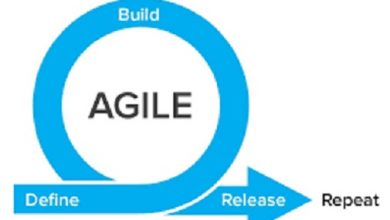Remote team management tools with 20 tools remote management
Controlling remote activities
Controlling remote activities is one of the biggest concerns for managers now that remote and hybrid work are here to stay. However, technology for the business sector has already advanced a lot and there are numerous tools to carry out this productivity monitoring even from a distance. In this article we will guide you about Remote team management tools.

Cybersecurity specialists treat remote employees as a threat, and they are right to do so. However, remote work is not a temporary trend, it is here to stay. For many specialists, the ability to work outside the office is an important benefit when choosing an employer. Additionally, remote access is required on business trips, for third-party vendors, and during emergencies such as pandemics, transportation collapses, and extreme weather events. For these cases, IT specialists must be prepared to: guarantee effective remote supervision of employees, provide secure and comfortable remote access to corporate systems, be able to provide tools to assess employee productivity. We’ve put together a list of best practices to help you monitor and secure remote activities. Some are purely organizational, while others require dedicated remote employee monitoring software, such as the Ekran System.
Clicksign has listed platform options that can improve the way your team works, allowing each employee to choose where they want to carry out their activities without compromising their performance in any way. Read on and find out what these alternatives are.
Discover 20 tools for managing remote teams
We have separated the best tools for managing remote teams that can help companies in different sectors. Check out what they are!
1-Productivity and teleworking tools
Task management can also be optimized in the home office!
1. Basecamp
This is a complete project management tool and among its features we can mention the control of activities, organization of goals, group chat and storage of files related to demand . With an intuitive interface, the software allows the creation of different spaces for clients and teams, facilitating the organization and access to information from wherever you are.
Not only your team can use this option to follow the progress of the tasks, but also your customers, since Basecamp has the option to add them to the database so that you can receive notifications of the activities in which you are scheduled. However, these people outside the company will only have access to what your team allows, so don’t worry.
There is a free version that limits the features to be used, but companies usually choose to pay for the software to access all the functionality of this platform.
2. Trell
Trello is another platform for task management. Its interface works from the creation of boards in which the team can create cards with their demands. This software uses the Kanban method – a form of organization that uses reminders to ensure the flow of tasks – to offer users a simple and intuitive management solution to work with.
Within the boards, team members can create checklists , add notes, archive activity-related documents, and much more.
Although there is a free version of this interface, it is limited in resources and in the number of people registered in the team. You can choose to pay an annual fee and use all the tools, in addition to the possibility of registering up to 100 employees on the platform so that everyone is integrated into the demand flowchart.
3. Asana
Asana is yet another managing remote teams tool that your team can use. The software is also based on the Kanban methodology. A differential is the integration with other management applications and the possibility of visualizing, through graphs, the time used to perform each task registered on the platform.
This option also has a discussion forum function where the team can post comments on the demand and understand the best way to carry out that work . It is also possible to choose from more than 50 templates so that the interface adapts itself in the best way to each project.
The free version limits access to up to 15 employees and also the number of tasks registered. However, there are paid options to unlock more functions.
4. To do-it
To do-ist is a tool for managing activities through customizable lists. It has a simple and easy-to-navigate interface, which allows you to view all the demands of the day and check the status of each of them. With this platform you can create a personal or collective action plan, managing activities better.
Like the others mentioned, this site has a free version and also some paid plans, which have other features.
5. Confluence
Confluence is a workspace that the team can use as a collaborative space. In it, it is possible to create projects, organize and store files, coordinate the team of collaborators and group all the most important information for the progress of the demands.
It is also possible to monitor the deadline of each activity, as well as its goals and who is responsible for this task. From the free version to the most complete version, there are numerous features on this platform. For example, when hiring the business plan, you have access to data tracking and insights into the team’s productivity.
6. Art
This is a task management platform that is considered one of the most complete on the market. In addition to offering the features already seen in other tools with the same human language. The objective, Artia allows real-time monitoring of the hours worked in each demand.
The task cards are customizable, it is possible to leave comments for other team members on each activity and even monitor the risk management of any strategic task , avoiding any negative consequences for the business. Its functionalities help to optimize time and problem solving.
You can do a free trial or opt for some of the more comprehensive plans.
7. Tandem
While some productivity and remote work tools only allow the visualization of the demands to be made, Tandem integrates the team in its interface and allows employees to work at the same time on the same activity. This facilitates decision making, optimizes time in each activity and avoids mismatching information.
Using this feature it is also possible to share your screen and let others follow your presentation while you explain what is necessary. This platform can also be integrated with other remote work management solutions.
8. Remember the Milk
A tool that allows each employee or team to list all the tasks that must be performed, as well as the subtasks, deadlines and other details that improve the organization of the company. The program issues notices to remind each member of what is most urgent or what demands are scheduled for the day. Thus, it is possible to have an optimized view of the company scenario and improve time self-management.
This is a free option that can help – a lot! – your company.
2-Business Communication
9. Slack
A business communication software in which you, the manager, and your entire team can ask questions as a group, make individual calls to make alignments and share files at any time . As it is possible to connect with any employee through calls, many issues that arise in the day to day work are resolved in a simpler and more agile way.
That way, it doesn’t matter if the team is working 100% remotely or hybrid, the delays in demands due to delays in responses will no longer occur. In the most complete version of the platform, Slack also has other features to optimize your business processes and you can access these options by paying a monthly fee.
However, if you don’t need a mechanism with so many features, you can use the free version of the platform.
10. Microsoft Teams
Microsoft’s video meeting platform is a way to integrate your team’s communication, share files and stream events in real time. Teams can be integrated with most other options from the company that created it and has a 10GB storage limit in the free version.
There are monthly plans designed for small businesses that expand some features and the number of simultaneous accesses. Microsoft also offers a more complete package, for large businesses that need to share many files and make several calls at once.
11. Google Meet
Meet is probably the most used online meeting tool by the public. It has video calling and screen sharing functions, but the great advantage of this option is its integration with other Google programs. For example, it is possible to schedule calls directly from Google Calendar, leaving the appointment and access link in the calendar of all guests.
For meetings , the interactive whiteboard options or polls made in the call tab itself are also very useful . In the paid version of this tool, you can make video calls with up to 150 people in the same room.
12. #matrix
This business communication platform simulates, in the online environment, what a traditional office would be. That is, rooms are created for each team, meeting rooms and even common spaces of the company, such as the pantry, are replicated. All this can be accessed quickly, because, as it is the simulation of an office, the areas end up being integrated.
This tool is free and is a more relaxed way of optimizing remote work processes.
13. Skype
Skype is another Microsoft software for videoconferencing and even voice calling functions from regular phones. It is also possible to chat, transfer files and much more with access from different devices . With these options, your company’s communication becomes simpler and more agile.
The tool is completely free and can be downloaded for devices of any operating system.
3-Tools for remote support and storage
14. Team Viewer
You know those technical problems that only the IT team could solve? Team Viewer is used to prevent someone from having to travel to the company’s headquarters to seek a solution with their colleagues. This remote access tool works even for robust systems , allowing another team member to access your device remotely and fiddle with whatever is needed.
This software also has other functions such as access to allowed cell phones and even support for Augmented Reality. Just to avoid wear and tear and the loss of working hours to move from where you are, this is an option that already greatly optimizes the day to day of companies with many employees.
15. Google Drive
Cloud document storage is one of the most needed features for teams working remotely. In addition to allowing the user to upload different file formats to its memory, Google Drive has several integrations with other Google tools , allowing team members to access and change what they need, regardless of where they are.
Despite having a free version that is widely accessible to the public, it is possible to hire the enterprise version of the platform to have more space in the cloud. After all, an entire team needs to put a lot more documents online than a normal user.
4-Human resources and team management
16. The Pomodoro Tracker
The Pomodoro method is a way to increase productivity based on creating shorter work cycles, with short breaks in between to increase an employee’s efficiency. The Pomodoro Tracker is a tool that times the moments of rest and the time to produce , helping the person to organize themselves in their demand without having to check all the time if it’s time to complete the cycle.
This platform is free and can be accessed from computers, cell phones or tablets. You can also add some tasks to the tracker so that it shows which demand is next to be started.
17. Clicksign Signature
One of the resources needed to do a good remote management is the use of digital signatures. They can be used to close contracts and sign documents of various types with just a few clicks , without having to leave where you are and allowing the management of a business to work even from a distance.
Clicksign Assinatura is an application that helps you carry out this validation process quickly and safely, ensuring agility in document releases and optimizing your work. You can try this tool for free for 14 days or hire the monthly plan.
18. Toggle
This is a platform to manage hours worked on demand. Thus, each employee can make a personal control of their productivity and managers can understand where the critical points of the operation are , or what needs more time to be carried out.
Toggl is a common integration in some task tracking platforms such as Artia. However, if you already have a way to organize the flow of activities, it is possible to rely on this software in the same way. Its more advanced options even offer comparisons of productivity records.
19. Blue Account
This is a solution for the financial management of small businesses that are working remotely. The platform allows you to monitor cash flow, organize finances and even offer more complete graphs so that it is easy to identify any changes in your business accounts.
ContaAzul is of great help to managers and the accounting sectors. It is also possible to monitor taxation and many other features that are available upon contracting the business plan.
20. Factorial
For online time and time control, Factorial is an excellent option. It consists of a cloud platform that allows you to manage the moments when team members enter and leave their shift. It is a great way to facilitate the day to day of the HR sector , as it helps to control absences and also shifts.
There is no free version of this platform, but there are packages at different prices. The most complete plans also include talent management features.




